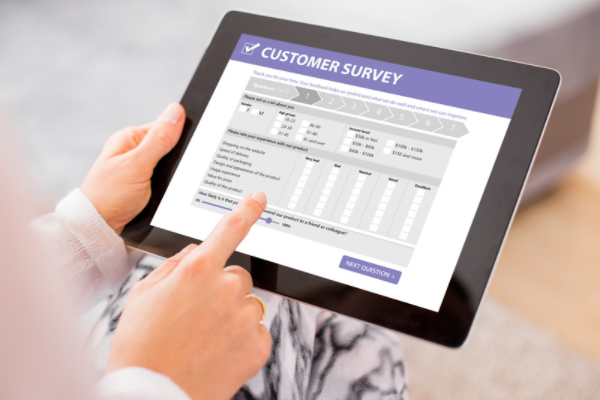
Finding the right people to answer a survey sounds pretty straightforward, right? Well, it’s actually a lot more challenging than it seems.
A common problem we observe in conducting surveys is that researchers usually find it difficult to recruit respondents to complete their questionnaires. The people they reach either don’t have the time, don’t fit the criteria, or are simply undependable.
If your participant pool doesn’t fit your research needs, that’s a lot of money and effort down the drain. With the success of your project largely dependent on getting valuable data from respondents, you don’t want to waste time scouring unreliable mediums.
In this article, we’ll discuss seven different ways on how to find survey respondents for more actionable recommendations.
The ‘Who’ is important
Before screening for respondents, ask yourself: “Who are the people I want to answer my survey?” In gathering feedback to improve your brand strategies, you want to survey qualified people, aka your target audience.
Qualified survey respondents are your current customers, past customers, or potential customers that have not yet engaged with the business. On the other hand, unqualified survey respondents include those who don’t want, need, or use your product.
Learning to distinguish between the two will help you avoid wasting resources that could be better used elsewhere.
Participant Sources
Your respondent source is naturally dependent on your research objectives. As you learn how to find survey respondents through these mediums, be sure to carefully consider the type of data you want to gather so you can administer the appropriate questions to the right target group.
All participant sources typically fall into these three categories: established, incentivized, and a combination of the two. Let’s take a look at each of them to identify which recruitment mediums are best suited for your goals.
-
Established
These sources already have a set customer base from which you can gather your survey respondents.
-
1. Email Marketing
This source provides you with a rich selection of people to draw results from. Your subscriber list contains email addresses from people in different age groups and demographic sectors that can be segmented into smaller groups for optimal targeting.
As your business grows, so does your email marketing list. Thus, providing you with an ongoing source of participants that you can collect feedback from in the future.
TIP: Manage your email list constantly to keep information clean, accurate, and up-to-date. Make sure to keep track of participants that have opted out of future research activities so you can comply with the GDPR.
-
2. Website Traffic
Similar to getting email leads on your page, you can also gather valuable feedback from the people who click on your website. You can track data analytics and control brand messaging using your existing data and website tools – providing an on-brand user experience.
TIP: The lesser clicks it takes for visitors, the better. Get a higher conversion rate by directing your website traffic to a landing or squeeze page with a call to action button so visitors won’t have to click around a hundred different buttons just to fill in their participant details.
-
3. Social Media
If your business has a decent following on Facebook, Twitter, or LinkedIn, these can be great platforms to share your survey for better visibility. Create posts that contain relevant hashtags and keywords along with a link to your survey so you can contact people that are interested in your study. Having your survey available on social media allows you to communicate in real-time with people from all over the world, opening up new international markets.
TIP: Since there’s no guarantee that your survey link will reach the right people, use an introductory set of questions in your survey to filter out unqualified participants.
-
4. Live Intercept
If you find that your demographic is less likely to respond online, it might be more productive to meet your audience where they are personally.
Get better information from people in the correct location. For example, it's easier to gain information on buyer decisions in a supermarket, where regular customers usually consider each product's pros and cons as they shop.
TIP: These people are typically busy, so be prepared by prioritizing your question list and asking the most critical questions first.
-
Incentivized
Incentivized sources recruit your respondents for you in exchange for a fee. These sources are helpful if you don’t have an established source to draw respondents from.
-
5. Survey software
Basic software packages reward incentives to people who partake and complete their surveys. These services allow researchers to create and distribute their surveys on the platform to their chosen audience.
TIP: Since respondents are being paid per completed survey, this source is susceptible to risks such as internet fraud (e.g., creating multiple email addresses, faking demographic information). Check if the service is engineered to prevent this from happening.
-
6. Recruitment platforms
Recruitment platforms offer a more convenient and reliable way on how to find survey respondents at an extra cost. They provide integrated recruitment panels wherein you can order respondents for your research. The chosen participants are screened according to your specified criteria before being recruited to ensure that only qualified people can fill in your survey.
TIP: If you need a larger sample size, but your target market is located in niche geography (e.g., designated market areas, specific zip codes, small counties), these platforms might not have enough people to meet the required number of participants. Social media is a great way to back-fill any remaining respondent slots.
-
Combination
This category is a mix between the two categories mentioned above, wherein established user bases are supplemented with paid traffic from Facebook ads, Google Adworks, and the like.
-
7. Paid ads
Advertising your study through Craigslist, Facebook ads, or notices in public areas is an inexpensive way to find survey participants. This source is ideal for broad-criteria studies since it draws respondents from the general population.
TIP: If your demographic criteria are more specific, it would be best to screen your respondent pool. Check if the ads you are putting out have clear requirements stated upfront to prevent skewed results.
In A Hurry to Find Survey Participants? Trust CiviSelect to Help You Recruit the Right Respondents.
Civicom’s dedicated recruitment platform has the reach to find the right people for your studies. Whether your research focuses on consumers, B2B, executives, C-Level, financial, medical, youth, or education, we have the right relationships worldwide to identify the respondents required for your study.


